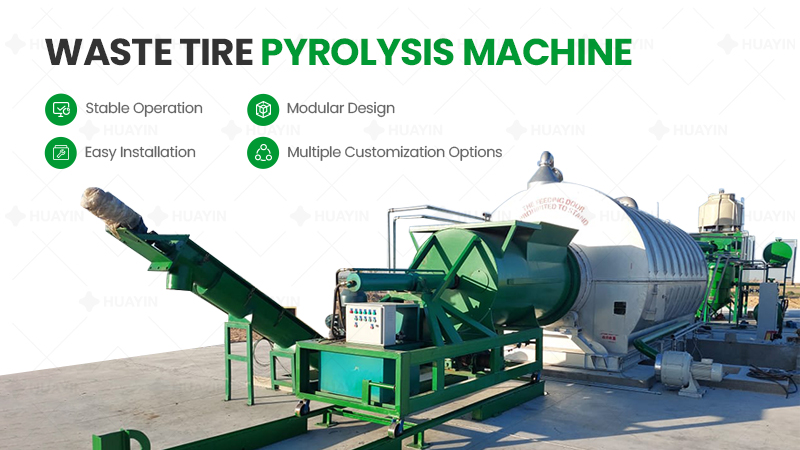
The waste tire pyrolysis project is to convert used tires into by-products such as fuel oil, carbon black, and steel wire through pyrolysis technology. The following are the steps to carry out the waste tire tire pyrolysis project:
1. Pyrolysis project feasibility study
Market analysis: Learn about the demand for end products (such as fuel oil, carbon black, etc.) in the local and global markets.
Regulatory compliance: Study relevant environmental regulations, waste management policies and approval procedures to ensure the project complies with national and local laws and regulations.
Cost estimation: Evaluate the initial investment, operating costs and potential benefits of the project.
2. Technology selection
Pyrolysis technology: Select suitable pyrolysis machine, such as continuous or batch type.
Equipment procurement: Purchase the qualified pyrolysis furnace, condensation system, dust removal system, and other devices. Ensure the pyrolysis plant supplier has good after-sales service and technical support.
3. Project site selection
Site selection: Select a location suitable for plant construction, considering convenient transportation, raw material supply, and distance.
Environmental assessment: Conduct an environmental impact assessment to ensure that the project site operation will not have a significant impact on the environment.
4. Plant construction and installation
Infrastructure construction: including plant construction, energy supply, water source treatment, and sewage treatment system construction.
Equipment installation and commissioning: Install the pyrolysis machine according to design requirements, and commission the equipment to ensure its smooth operation.
5. Operation and management
Raw material supply chain management: Establish a stable supply chain of waste tires.
Production management: Ensure the stable operation of the production process, control production costs, and improve product quality.
Product sales: Develop sales channels and bring fuel oil, carbon black and other products to the market.
Environmental management: Monitor and improve the environmental protection measures to meet national standards.
6. Continuous improvement
Equipment maintenance: Regularly maintain equipment to extend its service life.
Technology upgrade: Introduce advanced technology to improve production efficiency and product quality.
For the successful implementation of the project, adequate preparation in the early stage and continuous improvement in the later stage are essential. Huayin has more than 30 years of experience in pyrolysis projects, please feel free to contact us if you need more detailed information.



